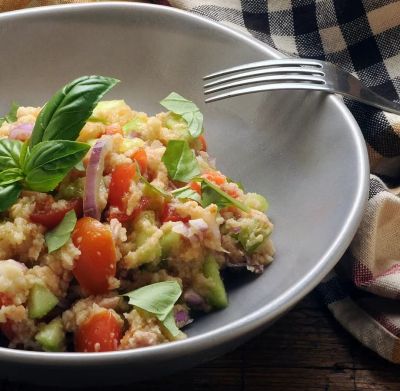Thirty years ago, when we farmed our land, every farmhouse had a matera (a traditional Umbrian bread cupboard) in the storeroom off the kitchen. This bread cupboard was used for the storing of freshly made bread as well as the huge bags of powdery flour, freshly milled from the homegrown wheat. The flour was kept in the lower part of the cupboard while the bread was kept in the storage area above, covered with a wooden lid which took two hands to lift. The bottom of this portion of the cupboard doubled as a bread board used for cutting and rolling.
In the Mediterranean world, bread is basically considered sacred. There are many superstitions associated with bread. Never put a loaf on the table upside-down and never cut bread at the table. Bread should be broken when eaten, never sliced.
Most importantly, bread is never, ever thrown out. In the years we farmed our land here in Umbria, left-over bread was at times fed to the chickens, ducks, geese, and guinea fowl. But the animals were only so lucky after I had enough breadcrumbs for cooking and was not about to make bruschetta or panzanella.
Panzanella is a keynote dish in cucina genuina (genuine cooking). In other words, traditional cuisine made of homegrown ingredients. In rural culture, bread is sacred and never thrown out.
This is our friend Peppa’s panzanella piatto dei poveri (poor man’s dish) recipe.
Ingredients (4 people):
• 1 lb. Nearly stale bread
• 4 Ripe tomatoes
• 6 Basil Leaves
• 1 Large, purple onion
• 1 Stalk celery
• 1 Medium-sized cucumber
• Extra-virgin olive oil
• Salt, pepper, q.b.
• Wine vinegar
• Optional: variety of salads (anything but iceberg lettuce)
Directions:
Soak the bread in water until soft then squeeze all water out. Cut all vegetables into small pieces. Season with olive oil, vinegar, salt, and pepper. Keep in cool place (not refrigerator) until served.
In the Lazio region, tomatoes and onions are omitted and capers, garlic, anchovies, and parsley are pulverized together with mortar and pestle. Hot red pepper is added.



